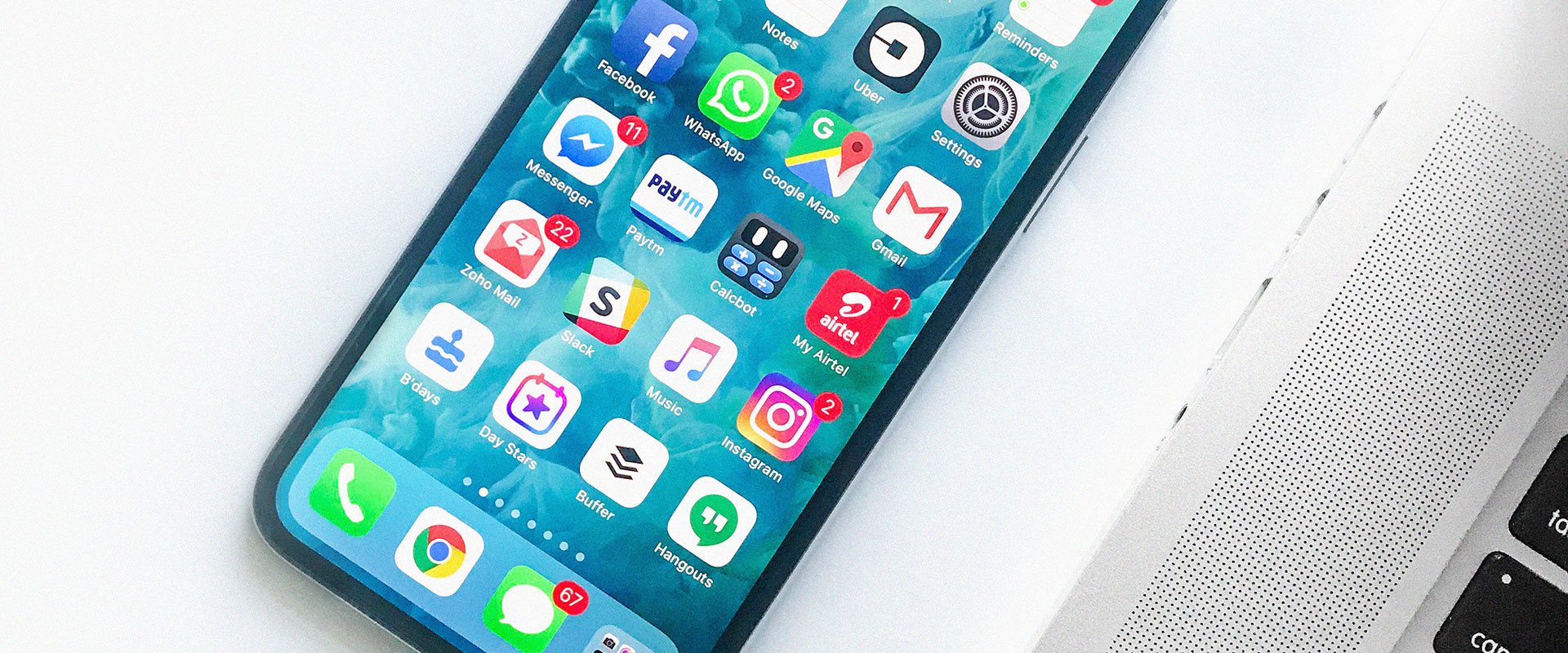Never do I hate my phone more than on nights like the ones decidedly dedicated to marriage and to family, dedicated to romance at best and to connection at least. Yet even though I lodged the offending device in the hallway as we — my wife, two daughters, and I — made heart-shaped pizzas, constructed a living room spa, and partook of many things dyed red and chocolate dipped, I felt acutely the absence of my little distraction box.
Compared to most people I encounter, I actually have my phone life tamed fairly well. No social media. Only personal email. Only one or two news apps allowed to push their notifications. I bought the iPhone with the smallest screen size. Still, I hate it.
I like some of what it can do, don’t get me wrong. I genuinely am not sure how I’d travel without the Fly Delta and Uber apps. Texting is great. The ability to Google something whenever a curiosity arises maybe helps a little here and there. I use the calculator an embarrassing amount. But almost every other aspect of toting around the little box does me far less good than harm.
In reality, I probably use the Google app for aimless browsing some 98 percent of the time. I do enjoy following a few different sports, as I’ve said, but my oscillation between the apps of ESPN, The Athletic, and CBS Sports, likely looks a lot more like stalking than following. Even the thumb-work that can feel productive like checking stocks or bank accounts too often takes place at ridiculous times. Like at a meal, in church, during conversation, or when somehow 30-second commercials aren’t entertaining enough. And those moments don’t even touch the activities to which time spent looking into some rando’s March Madness seeding could go. Like talking with my wife or friends. Wrestling with my kids. Reading the lonely books waiting on my nightstand.
Maybe it’s a cop out to blame my phone for what you could point to as character flaws or mental weaknesses. Fair enough. But I’m not alone in this. Many of us appear to have a problem with attention, holding it, keeping it, getting it, giving it.
In memed-out parts of the internet — which exists curiously critical of distraction and yet embodies it — you’ll often see a quote attributed to philosopher Simone Weil: “Attention is the rarest and purest form of generosity.” And you’ll regularly see it bannered over a mountain-scape background, which is I guess focus-y. That even some of Weil’s thoughts float around Instagram and Pinterest, however ironic, recalls the force and utter brilliance of her work.
Weil, a Paris-born moral philosopher who lived during the first half of the 20th century, belonged to and eschewed nearly every imaginable category. Just look at this description from the Internet Encyclopedia of Philosophy: Weil was an “ascetic and mystic, teacher and factory worker, labour activist and political militant, social thinker and piercing moral psychologist, critical Marxist and heterodox Christian theologian.” Unsurprisingly, Weil’s ideas and the contours thereof are complex and force their way into several tributaries, all of which you can explore with a more qualified guide than I. As her meme quote suggests, though, her most recognizable contribution to philosophical and Christian thought relates to attention.
She disagreed with contemporaries like Jean-Paul Sartre who assumed a Rousseauian ethic of individual autonomy — that the self is the center of the ethical and existential world. Instead, Weil argued for an external center (or external centers) to the world and to existence, and she suggested that a moral life is one attended to others, to their existence and to their care. For Weil, attention is love, you could say. In Waiting for God, she writes:
To empty ourselves of our false divinity, to deny ourselves, to give up being the center of the world in imagination, to discern that all points in the world are equally centers and that the true center is outside the world, this is to consent to the rule of mechanical necessity in matter and of free choice at the center of each soul. Such consent is love. The face of this love, which is turned toward thinking persons, is the love of our neighbor.
More simply: To give someone attention is to recognize that they exist and to assent that their needs, at least for a moment, are more important than my own. Now, like philosophers are wont to do, Weil packs her own stuff into her terms, and readers in 2023 should remember that Weil’s definition of attention only partially aligns with the colloquial and scientific ways we tend to use it. Still, her idea of attention and love seems true. A perhaps trite example: If you’ve ever shared a table with someone who portaled attention everywhere but to you, then you know that table feels nothing like love.
Last month, UC-Irvine professor Gloria Mark published Attention Span: A Groundbreaking Way to Restore Balance, Happiness and Productivity. The emphasis of her project, as the subtitle hints, is toward rebuilding attention spans mainly in the context of work. In the process, she outlines the dire state of, yes, attention spans. She recounts how parallel studies in 2004 and 2012 showed a 50 percent decrease in the time knowledge workers focused on a given task — like, from a spreadsheet, to a phone call, to an email, etc. — before switching. You probably don’t need a study to tell you that our attention spans haven’t improved over the last decade. Though exact figures and attribution stay curiously elusive, you can find plenty of reputable sources online claiming that workplace interruptions and distractions cost the U.S. economy billions of dollars, and according to one study, companies in 2022 lost 720 work hours per employee to distractions.
Of course, it would be nice if this phenomenon stayed at work. But, by now, you’ve seen the studies. Before Attention Span, Mark co-authored the now-famous study that suggests we need the better part of 23 minutes to regain focus once it’s been broken, and that reaches way beyond office work. Almost a half-hour before I get going in a book after I’ve looked up to make a comment. Or before I can engage my younger daughter after responding to the ping of an Allbirds email promotion.
Books and studies help academics and journalists document these phenomena, but you and I already recognize the problem. If you’re like me, you feel them. For me, it all comes back to my iPhone. Smartphones are definitionally addictive. So when the government finds that they seem to induce stress that can only be alleviated by constant smartphone use, who could be surprised? Either you’re checking every email, text, news alert, Twitter mention, or you’re worried that you’re missing them. Even when you try the self-discipline route, the notifications get you.
This makes for sloppy attention ping-pong. To say nothing of guilt. Because not only does the incessant dinging stuff pull at me, so does the corresponding guilt of reading an email from someone who I don’t know, addressed to me only by some bit of code, regarding something about which I barely care — all at the expense of the dinner that needs preparing, the woman and two children who fill up my house and comprise my home. My optometrist just told me that screens are likely ruining my vision and my sleep. Meanwhile, there are the eyes of my children that quite literally need to meet mine. Yet the competition between the two infuriatingly persists.
True, I didn’t have to subscribe to that end-of-day Axios email. I didn’t have to allow notifications. I didn’t have to respond to the ching-a-ring. But it sure seems like there’s more going on than app management.
You’ve likely heard it said that the reason we can use so many digital platforms and products free of charge is because we are the product someone else is buying and selling. Truer: Our time and attention are the products. I’ve written elsewhere about Jenny Odell’s book How to Do Nothing, in which she directly addresses the ways in which current forces commodify and monetize our attentions. Odell’s fits into a growing body of work trying to sort through the complex of technology and the internet, time and work, humanity and world around us. Odell adopts, if antagonistically, Herbert Simon’s category of the attention economy, and points to various ways the sapping of attention disorients:
Among my students and in many of the people I know, I see so much energy, so much intensity, and so much anxiety. I see people caught up not just in notifications but in a mythology of productivity and progress, unable not only to rest but simply to see where they are.
And where are we? Somewhere where a deluge of interruptions seem to be diluting and diluting not just our moment-by-moment attention (span) but our capacity and desire for attention, too.
Again with Weil: “Attention is the rarest and purest form of generosity,” she writes in a posthumous collection of her writing. This represents the popular part of her concept of attention. We can recognize and apply it easily enough: It’s selfish, not generous, to give your scariest resource to an outrage machine, to scores of football games, or even to a decades-long career at the expense of what’s ostensibly more important. Let’s not do that, you and I. But if Weil is right, and so is Odell, we face a disordering of love that shows up in various levels of screen addiction and, yes, in our individual and communal capacity to love.
Weil believed, more or less, that to love is to give attention, to move focus from the self to others. To another. Graciously, this recalls the source of love in the first place and is also the way of its repair.


